In North America there are seven species of Grebes, however this post will focus on the Red-necked Grebe, which is a medium to large sized bird that frequents fresh water marshes and lakes from the north-west (Alaska & the Yukon) extending southwards to Texas. It is rarely found east of Ontario.
The Red-necked Grebe is a rather nondescript grey bird during the winter months, however transforms into the beautiful bird in this post when it adopts its breeding plumage, including its red neck, white face and black crown with its characteristic tufts.
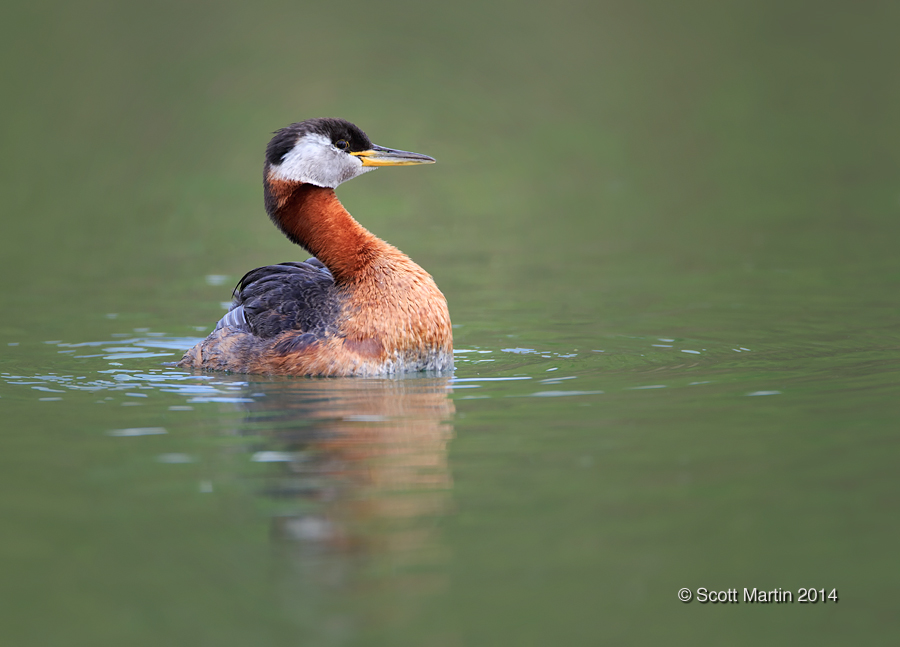
Grebes typically nest on floating beds of vegetation which allows for protection from the usual land based predators. Like Loons, Grebes are awkward taking flight and ‘run’ along the water for a long distance before acquiring the speed required to take flight. As a result of this you don’t often see Red-necked Grebes in flight other than during migration. Also similar to the Loon, the Grebe’s legs are positioned far back on its body making it very immobile on land but adept in the water. The Grebe dives when faced with a threat as opposed to taking flight. This next image show an adult on the floating nest (in breeding plumage both sexes appear the same so differentiation is very difficult, although the male is usually the heavier of the two sexes).
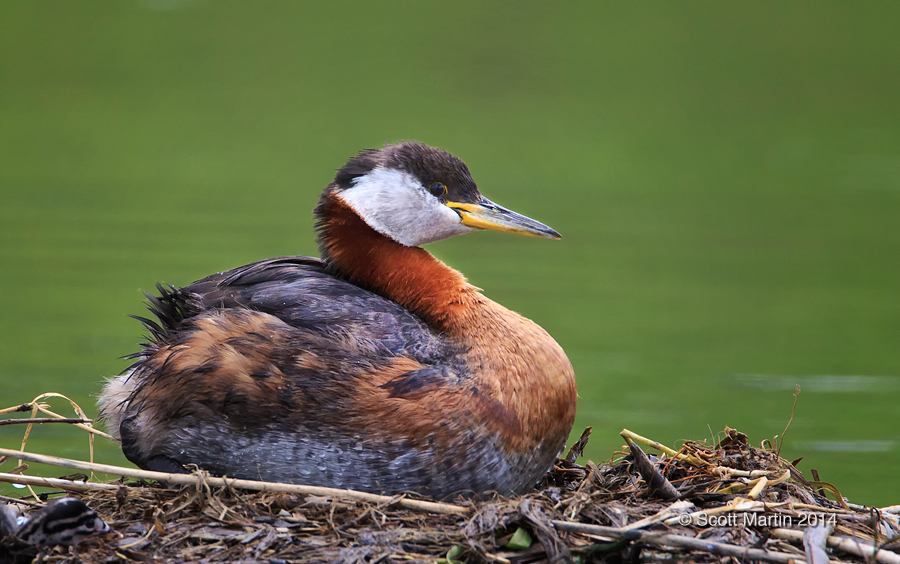
Red-necked Grebes lay two to six eggs which enjoy shared incubation for 20-23 days before hatching. This family had four young ones making for a busy time of feeding. The biggest threat to the young chicks are fish (particularly pike and muskie) and snapping turtles and for this reason, along with the desire to keep warm and comfortable, they spend the first few days of life snuggling on the backs of the parents. It is always a treat to see these young families and watch the young jostle with each other to get the favoured position on mom or dad’s back.

The choice position cuddled at the base of a parent’s neck is only available to one, but perhaps they take turns! Young birds grow very rapidly and Grebes are no exception, so the opportunity to see them on the backs of the parents only lasts for a few days. In just a few months they must be big enough and strong enough to migrate south for the winter. Interestingly, Grebes migrate mostly at night.
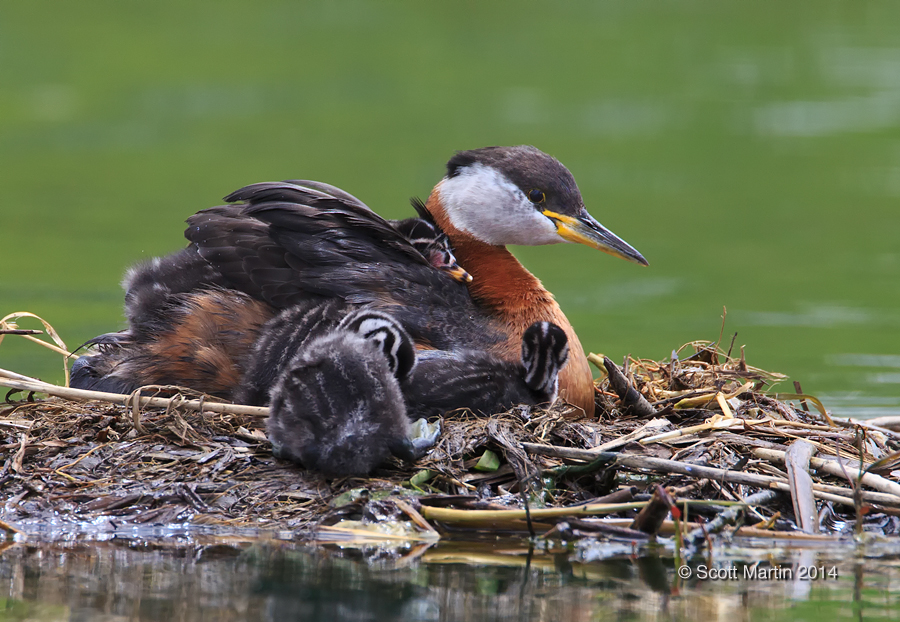
The little sentinel, learning to be a keen observer of the surroundings. Observational skill is essential for survival and although the Grebe reduces land based predator threats by nesting on the water, other birds (hawks and gulls) pose danger as do many other aquatic adversaries (fish, snakes & turtles). Grebes are typically very quiet however when threatened do make a series of loud and unusual screeches & squawks.
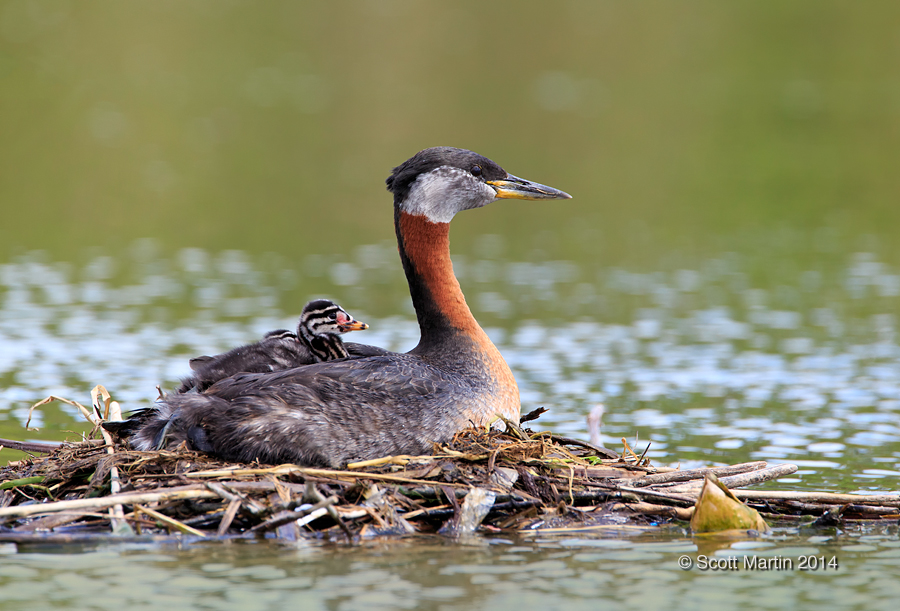
The chicks have very distinctive black and white banding patterns on their head and necks which give them a little zebra like appearance. This next shot captures the unique beauty of the young birds head.
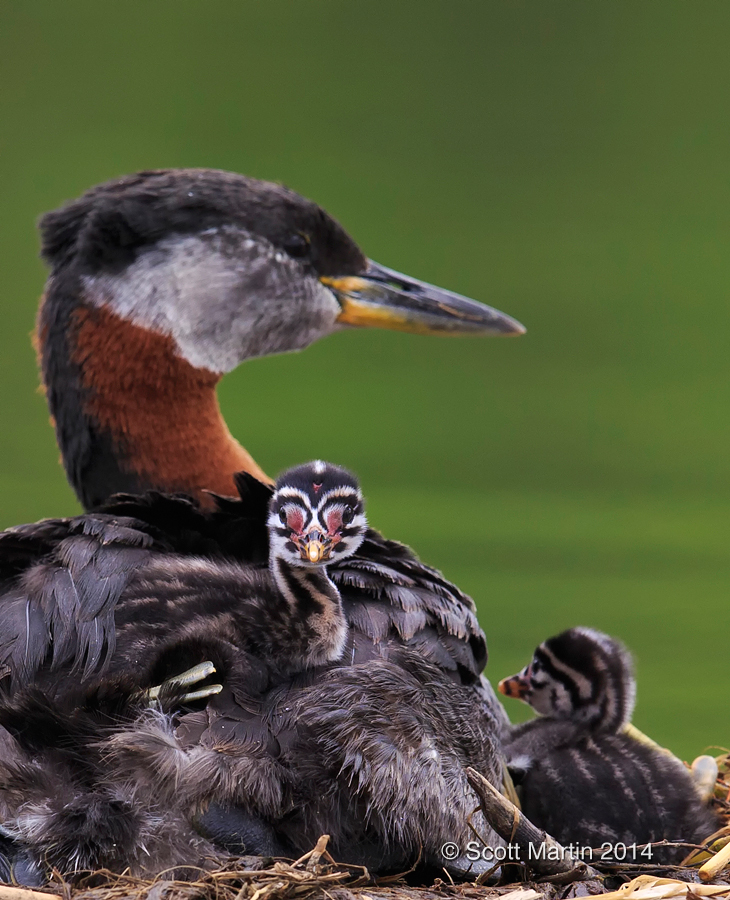
Red-necked Grebes consume mostly invertebrates including insects, molluscs, dragonflies, beetles and crayfish and they also eat fish. The Grebes also have a very peculiar item on their menu; they regularly eat their own feathers and in fact start feeding feathers to the young when they are only a few days old. The feathers remain in the stomach and tend to partially decompose into a soft amorphous mass. It is not known what the purpose of the feathers in the stomach is, although it has been suggested that they form a filter of sorts to prevent ingested bones from damaging the digestive tract.
While my good friend Arni and I were photographing the Grebes pictured in this post, we had the privilege of watching the young chicks being fed numerous times. The challenge was to get a great feeding shot with everybody looking at the approaching meal. Fortunately all four of the young cooperated at least for the split second required to get this shot. This shot is also humorous in that Dad is being overly optimistic in just how big of a fish the young ones could handle and the weight of this meal caused it to be dropped as soon as it was handed over. No problem though as the parent immediately returned with a smaller fry for the youngsters.
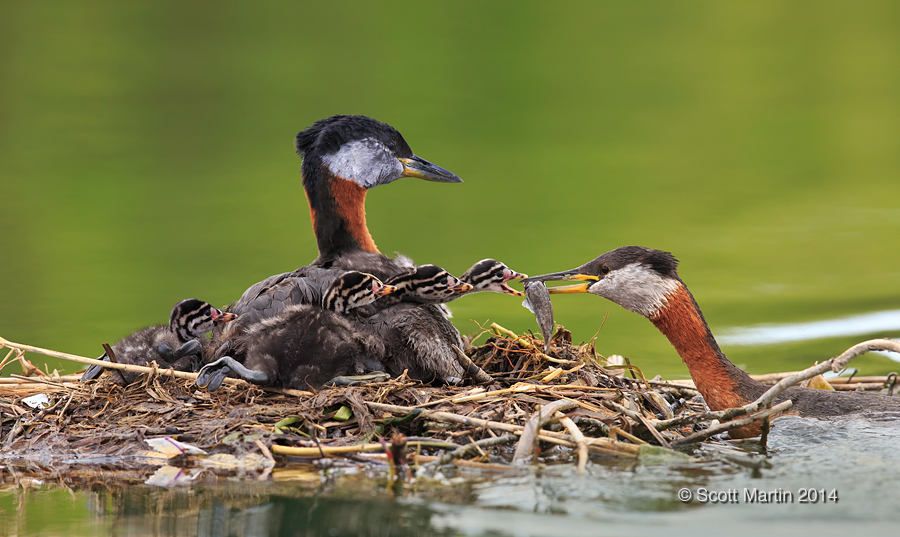
I was hopeful to photograph a Grebe chick on the back of a parent while swimming away from the nest, however this was not be. The next two images were as close as we were able to get, but that’s the beauty of bird photography, no matter how many great shots you’ve taken there is always a better one to be had next time. So we keep on looking for that ‘perfect’ yet elusive shot.
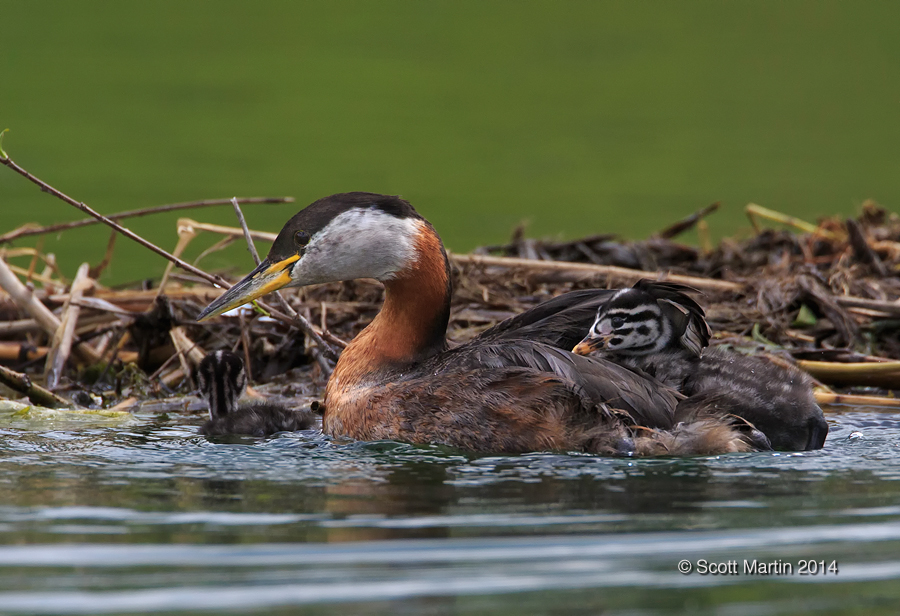
.
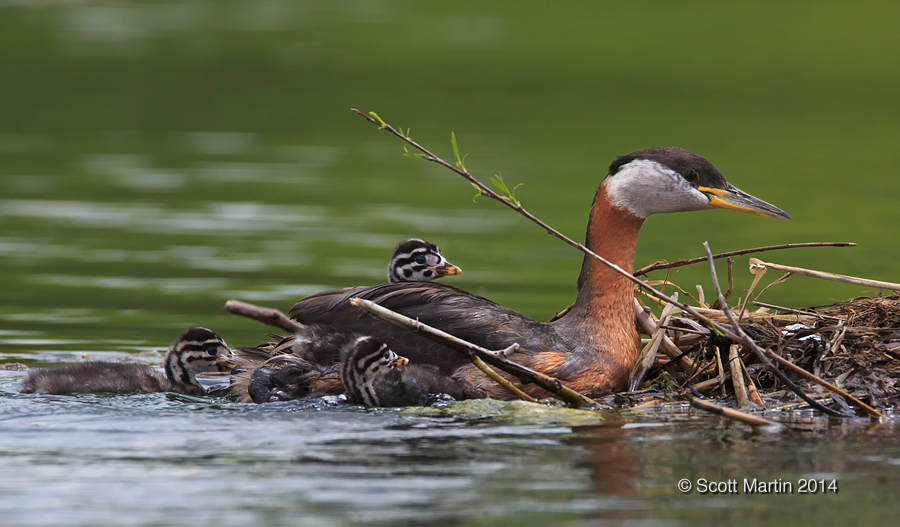
The Red-necked Grebe was an interesting bird to observe and photograph. They are also very photogenic as this concluding image demonstrates.
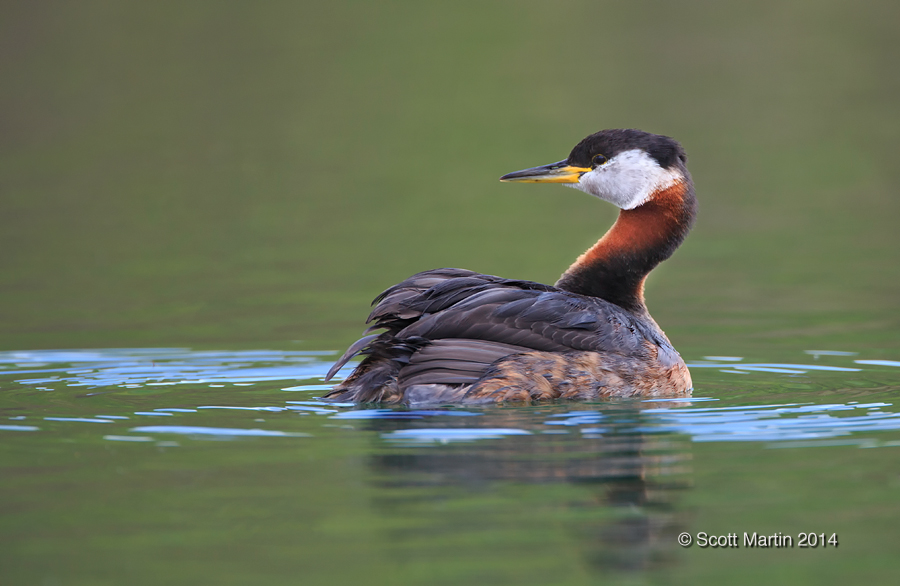
A couple of interesting facts regarding the Red-necked Grebe is that its feet are lobed rather than webbed and a group of Grebes together on the water are referred to as a ‘water dance’ of Grebes.
All of the images in today’s post were taken hand-held with a Canon 5D Mk III and EF 500 mm f4 L IS lens. Normally I use a monopod to support the weight of the lens, however as all of the images were taken while lying down to get a more desirable low angle, support for the lens was not available.


You have created another super post Scott with a great variety of high-quality images. Thanks for the mention in your blog and it was a great couple of hours together albeit way too short.
Thanks Arni, and yes it sure seems that whenever we are out with the cameras the time slips by incredibly quickly!